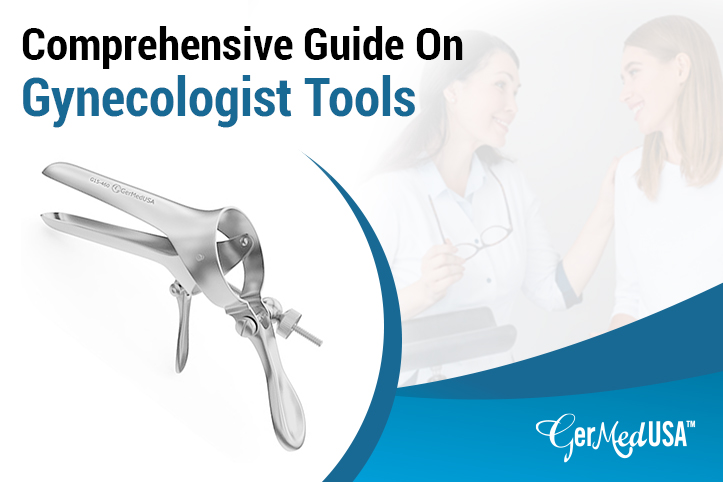As an expectant mother or a woman seeking medical care for gynecological issues, you may have come across various tools used by obstetricians and gynecologists (OBGYNs) during your appointments. These instruments are essential to help diagnose and treat conditions related to pregnancy, childbirth, and reproductive health.
In this article, we will provide a comprehensive guide to the various OBGYN tools used by healthcare providers. From speculums to fetal monitors, we’ll explore each instrument’s purpose, design, and usage. So let’s dive into the world of OBGYN tools!
[h2]Speculum[/h2]
The speculum is one of the most commonly used tools in gynecology. It is a device that allows doctors to examine the cervix and vagina visually. The speculum comes in different shapes and sizes, but all have two blades that separate the vaginal walls for better visibility.
During an exam, the doctor will insert the closed speculum into the vagina and then open it to expose the cervix. Once exposed, they can perform procedures such as Pap smears or take samples for further testing.
[h2]Colposcope[/h2]
A colposcope is an instrument used during a colposcopy procedure. This instrument is similar to a microscope with a light source attached that magnifies the cervix and vaginal tissues’ surface area. Colposcopy is usually done when there are abnormal cervical cells detected during a Pap smear or other screening tests.
With a colposcope, doctors can identify any abnormal growths or lesions on the cervix or vaginal tissues. They can also take biopsies during the procedure if necessary.
[h2]Ultrasound Machine[/h2]
An ultrasound machine is used in obstetrics to monitor fetal growth and development during pregnancy. The ultrasound machine uses sound waves to create images of the fetus and uterus.
During an ultrasound exam, a transducer is placed on the abdomen or inserted into the vagina. The transducer emits sound waves that bounce back from the fetus and surrounding tissues, creating an image on the monitor.
[h2]Fetal Monitor[/h2]
A fetal monitor is a device used to track the baby’s heart rate during labor and delivery. It can also help identify any potential issues during pregnancy, such as fetal distress.
The monitor consists of two sensors, one placed on the mother’s abdomen to detect uterine contractions and another attached to the baby’s scalp to measure their heart rate. The information is displayed on a monitor and can be used by healthcare providers to make decisions about delivery methods.
[h2]Forceps[/h2]
Forceps are a type of instrument used during childbirth. They look like large tongs with two curved blades that fit around the baby’s head. Forceps are used when there are difficulties during labor, such as if the baby is in distress or not progressing through the birth canal.
With forceps, doctors can assist with guiding the baby’s head through the birth canal safely. However, their usage requires specialized training due to the risk of injury to both mother and child.
[h2]Vacuum Extractor[/h2]
A vacuum extractor is another tool used during childbirth when there are difficulties delivering the baby. It consists of a soft cup attached to a suction device that fits around the baby’s head.
The doctor will use suction to guide the baby’s head through the birth canal safely. However, like forceps, this procedure requires specialized training due to its potential risks.
[h2]Hysteroscope[/h2]
A hysteroscope is an instrument used for diagnosing and treating abnormalities in the uterus or cervix. It has a tiny camera at the end of a thin tube that is inserted through the vagina and cervix.
With a hysteroscope, doctors can examine the uterus’ interior and diagnose conditions such as fibroids, polyps, or adhesions. They can also perform procedures like removing growths or taking biopsies during the exam.
[h2]Curette[/h2]
A curette is a surgical instrument used to scrape tissue from inside the uterus. It is typically used in women who have experienced miscarriages or had abnormal bleeding.
During this procedure, the doctor will insert the curette through the cervix into the uterus to remove any abnormal tissue. The sample collected can then be sent for further testing.
[h2]Conclusion[/h2]
OBGYN tools are essential instruments that help healthcare providers diagnose and treat conditions related to pregnancy and reproductive health. From speculums to fetal monitors, each tool serves a unique purpose in ensuring safe childbirth and gynecological care.
If you have any concerns about your reproductive health or require obstetric care, it’s essential to seek medical attention from a qualified OBGYN. With proper medical care and advanced instruments, you can ensure a healthy pregnancy and reproductive system.
References:
– American College of Obstetricians and Gynecologists. (2021). Instruments Used in Obstetrics and Gynecology. Retrieved from https://www.acog.org/clinical/clinical-guidance/committee-opinion/articles/2014/11/instruments-used-in-obstetrics-and-gynecology
– Mayo Clinic. (2021). Colposcopy. Retrieved from https://www.mayoclinic.org/tests-procedures/colposcopy/about/pac-20385096
– National Institute of Child Health and Human Development. (2017). Fetal heart rate monitoring during labor. Retrieved from https://www.nichd.nih.gov/health/topics/labor-delivery/topicinfo/fetal-monitoring
– Society of Obstetricians and Gynaecologists of Canada. (2013). Forceps Delivery. Retrieved from https://sogc.org/en/content/115-forceps-delivery.html
– Stanford Children’s Health. (n.d.). Vacuum Extractor. Retrieved from https://www.stanfordchildrens.org/en/topic/default?id=vacuum-extraction-90-P02356




